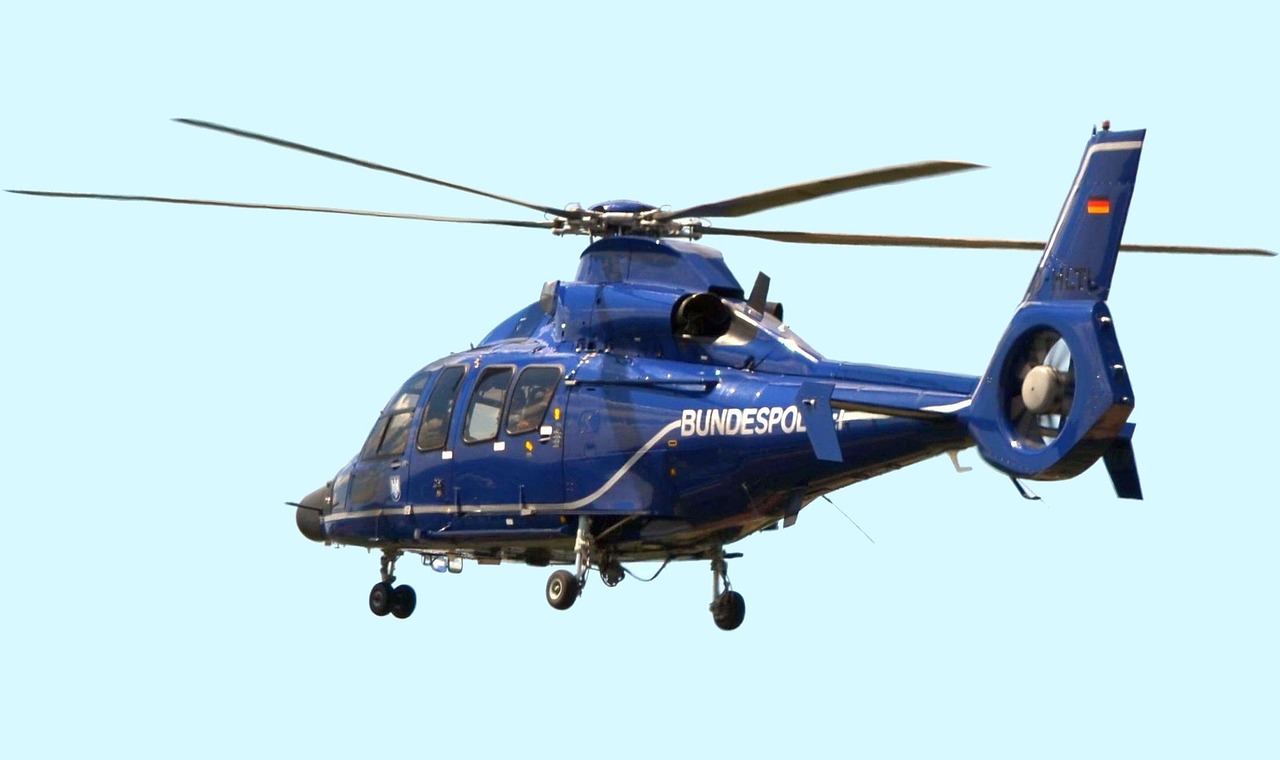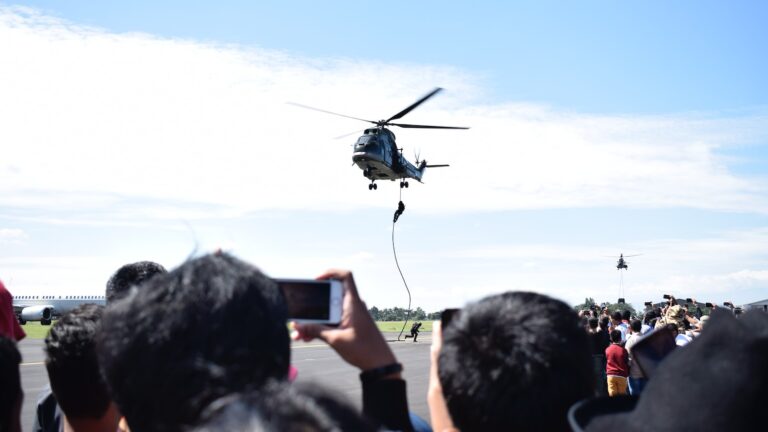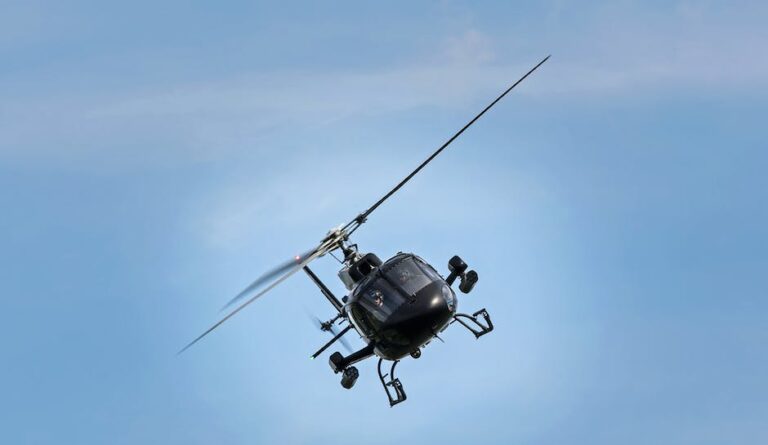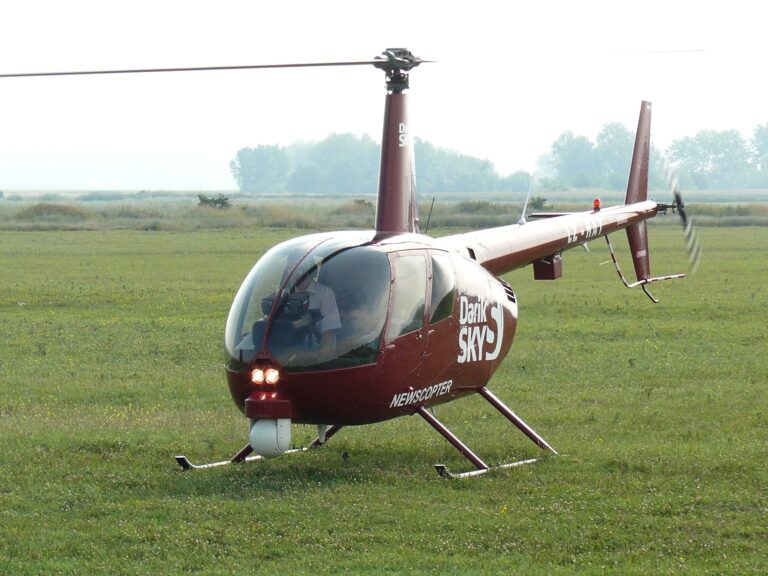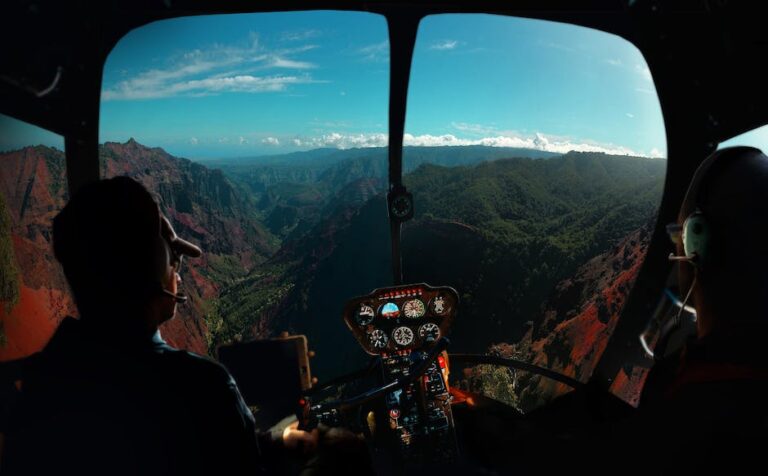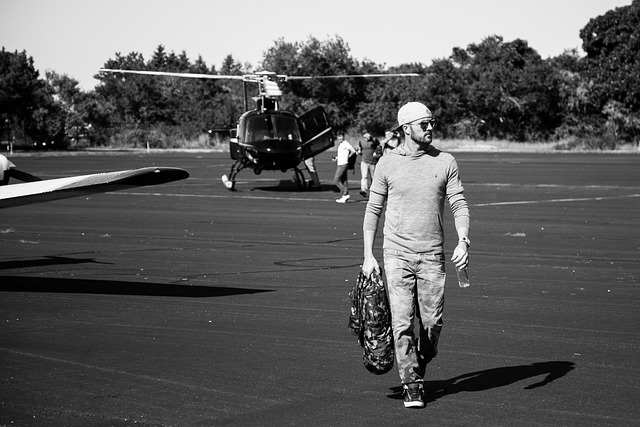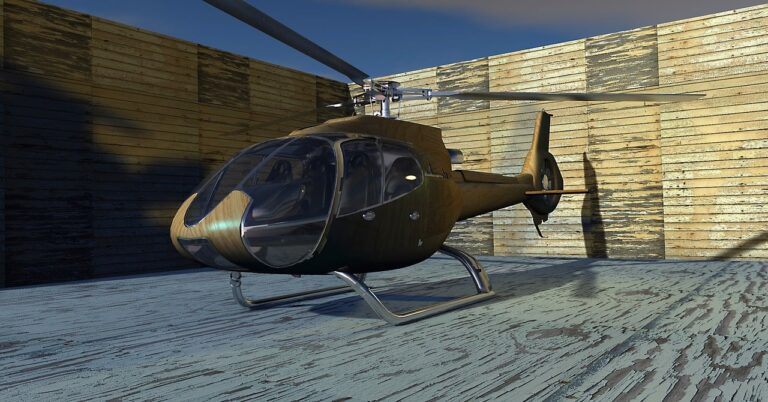Is It Harder to Fly a Plane or Helicopter
Is it harder to fly a plane or helicopter? That’s a question that has piqued the curiosity of many aviation enthusiasts. Whether you’re a seasoned pilot, an aspiring aviator, or simply someone with a passion for all things airborne, it’s a query that begs for exploration. So, let’s cut straight to the chase and take a closer look at the complexities of both aircraft. In this article, we’ll dive into the key factors that make flying either a plane or a helicopter a unique and demanding endeavor. Without further ado, it’s time to unravel the mysteries behind these magnificent machines and determine once and for all which one reigns supreme in the realm of aerial mastery.
Table of Contents
- Determining Which is More Challenging: Flying a Plane or a Helicopter
- The Fundamental Differences in Flight Controls and Handling
- Navigational Complexity: Assessing the Challenges Faced by Pilots
- Weather Conditions and their Impact on Flying Aircraft vs. Helicopters
- Expert Tips: Mastering the Art of Plane and Helicopter Flying
- FAQs
- The Conclusion
Determining Which is More Challenging: Flying a Plane or a Helicopter
When it comes to deciding between flying a plane or a helicopter, determining which one is more challenging is not a straightforward task. Both aircraft require different skill sets and present their own unique set of difficulties. Let’s explore the key factors that contribute to the complexity of each.
Flying a Plane:
- Navigation: Pilots must navigate through various airspaces, often dealing with congested traffic and complex flight routes.
- Control: Handling a plane requires precise control over its altitude, speed, and direction. Mastering the numerous controls, such as yoke, rudder pedals, and throttles, demands practice and coordination.
- Weather Conditions: Pilots need to stay vigilant about weather changes and adapt their flight plans accordingly. Turbulence, strong winds, and poor visibility pose additional challenges.
Flying a Helicopter:
- Hovering and Vertical Flight: Unlike planes, helicopters can hover in mid-air and take off or land vertically. This requires developing a keen sense of coordination between the hands and feet to manipulate the helicopter’s pitch, roll, and yaw.
- Multi-tasking: Helicopter pilots must handle multiple tasks simultaneously. They need to monitor various instruments, communicate with air traffic control, and constantly scan the surroundings for potential hazards.
- Flight Maneuvers: Performing complex maneuvers like autorotation, hovering in confined spaces, and executing quick turns demand exceptional skill and concentration from helicopter pilots.
Ultimately, both flying a plane and flying a helicopter present their own set of challenges. While planes require mastery of navigation and control, helicopters demand precise hands-on coordination and the ability to multitask effectively. The choice depends on an individual’s preferences, aptitude, and what kind of flying experience they seek.
The Fundamental Differences in Flight Controls and Handling
Flight controls and handling are at the core of any aircraft’s operation, and understanding their fundamental differences is crucial for pilots and aviation enthusiasts alike. A primary distinction lies in the type of control system employed. While traditional planes rely on mechanical linkages, modern aircraft, especially those with fly-by-wire technology, utilize electronic systems. Let’s explore these differences further.
1. Mechanical Linkages:
– These controls use physical connections, such as cables and rods, to transmit pilot input to the control surfaces.
– Control movements are directly translated from the pilot’s actions to the control surfaces, enhancing the sense of feedback and tactile response.
– Aircraft with mechanical linkages often require more physical effort from pilots to control the aircraft, especially during high-speed maneuvers.
2. Fly-by-Wire Systems:
– In contrast, fly-by-wire (FBW) systems replace mechanical connections with electrical signals, transferring pilot input to computers that actuate the control surfaces.
– By using sensors and electronic interfaces, FBW systems offer enhanced precision and stability, as well as the ability to augment pilot input for improved safety.
– FBW aircraft offer superior control authority, making them highly maneuverable and responsive, even in extreme conditions.
Understanding these fundamental differences in flight controls and handling not only deepens our appreciation for the intricacies of aviation but also underscores the technological advancements that have revolutionized the industry. Whether it’s the traditional mechanical linkages or the innovative fly-by-wire systems, the ultimate goal remains the same: to ensure safe and efficient control of an aircraft throughout its flight.
Navigational Complexity: Assessing the Challenges Faced by Pilots
Navigating the skies is no easy task, and pilots face a multitude of challenges when it comes to getting from point A to point B. The complexity of air navigation cannot be underestimated, and it requires an in-depth understanding of various factors to ensure a safe and efficient journey. Here, we will explore the navigational complexities that pilots encounter and the challenges they must overcome.
1. Weather conditions: Pilots must constantly monitor weather patterns and anticipate how it will affect their flight path. From turbulent winds to low visibility due to fog or heavy rain, weather conditions can significantly impact navigation. Making informed decisions to avoid hazardous weather is crucial for the safety of the aircraft and its passengers.
2. Air traffic control: With thousands of flights taking place simultaneously, pilots must adhere to the instructions given by air traffic control. This includes following designated flight paths, maintaining a safe distance from other aircraft, and adjusting altitudes as directed. The ability to communicate effectively with air traffic control is vital to ensure smooth navigation and avoid potential conflicts in crowded airspace.
3. Instrumentation and technology: Pilots heavily rely on advanced instrumentation and technology to navigate accurately. From radio navigational aids to GPS systems, these tools provide critical information about the aircraft’s position, altitude, and speed. Pilots must be proficient in operating and interpreting this equipment, as it serves as their primary means of navigation.
4. Restricted airspace: Certain areas of the skies are designated as restricted or prohibited airspace due to military operations, security reasons, or other factors. Pilots must be aware of these restrictions and plan alternative routes accordingly to avoid entering prohibited areas.
5. Airport procedures: Navigating the complexities of airport operations is also a challenge for pilots. They must adhere to specific procedures like runway configurations, taxiway routes, and airspace constraints. Staying organized and following these protocols is crucial to ensure a seamless transition from takeoff to landing.
In summary, the challenges faced by pilots in navigating the skies are numerous and diverse. From weather unpredictability to strict air traffic control instructions and the use of advanced technology, pilots must possess the skills and knowledge to navigate with precision and efficiency. Only through careful assessment and adaptability can these challenges be successfully overcome, leading to safe and smooth journeys for all.
Weather Conditions and their Impact on Flying Aircraft vs. Helicopters
When it comes to weather conditions, both flying aircraft and helicopters face unique challenges. Understanding how these conditions affect each type of aircraft is crucial for safe and efficient operations. Here, we discuss the various weather factors and their distinct impacts on airplanes versus helicopters.
Wind: Wind speed and direction significantly affect both aircraft types. However, airplanes are generally more susceptible to crosswinds, which can create turbulence during takeoff and landing. Helicopters, on the other hand, have more maneuverability and can adjust their flight path to compensate for wind changes.
Visibility: Poor visibility due to fog, rain, or low clouds can hinder both airplanes and helicopters. However, helicopters often have an advantage as they can fly at lower altitudes and make use of visual flight rules (VFR), allowing them to continue operating in limited visibility conditions where airplanes might be grounded.
Turbulence: Turbulent weather can be challenging for both aircraft, but helicopters tend to handle it better due to their ability to hover and make quick adjustments. Airplanes rely on their forward motion to maintain stability, and sudden turbulence can lead to disruptions in their flight path.
Expert Tips: Mastering the Art of Plane and Helicopter Flying
So, you want to become a master of the skies? Look no further! We’ve got some expert tips to help you soar to new heights in the world of plane and helicopter flying. With these insider secrets, you’ll be able to navigate the clouds with confidence and finesse.
First and foremost, hone your skills through diligent practice. There’s no substitute for experience when it comes to aviation. Spend time in the cockpit, familiarize yourself with the controls, and practice your maneuvers. Whether it’s executing the perfect takeoff, mastering precision landings, or performing advanced aerial maneuvers, practice makes perfect.
- Study the manuals: Familiarize yourself with the aircraft’s operations manual. This will give you a comprehensive understanding of the vehicle’s capabilities and limitations.
- Maintain situational awareness: Always stay alert and aware of your surroundings. Keep an eye on the weather, monitor air traffic control, and scan for any potential hazards or obstacles.
- Stay calm under pressure: In high-pressure situations, it’s crucial to remain calm and composed. Keep a cool head, follow your training, and make informed decisions.
Remember, mastering the art of plane and helicopter flying takes time, patience, and dedication. But with these expert tips tucked under your wings, you’ll be well on your way to becoming a skilled aviator. Happy flying!
FAQs
Q: Is it harder to fly a plane or helicopter?
A: Flying a plane or helicopter each come with their own unique set of challenges. While it’s tough to say definitively which is harder, both require distinct skills and abilities.
Q: What makes flying a plane challenging?
A: Piloting a plane involves handling the principles of aerodynamics, navigation, and complex instrument panels. Learning to fly a plane requires acquiring in-depth knowledge of controls, maneuvering the aircraft at high altitudes, understanding air traffic protocols, and operating various systems on board.
Q: What are the difficulties associated with flying a helicopter?
A: Flying a helicopter can be particularly challenging due to its complex controls and unique flight characteristics. Helicopters require constant, precise control adjustments in order to maintain balance and stability. Pilots must master techniques such as hovering, autorotation, and vertical takeoffs and landings, which demand great skill and coordination.
Q: Are there any specific skills needed for piloting a plane or helicopter?
A: Both piloting a plane and helicopter demand exceptional hand-eye coordination, multitasking abilities, and good judgment. Pilots should also possess strong spatial awareness, quick decision-making skills, and the ability to think critically under pressure.
Q: Are there any differences in training for flying a plane versus a helicopter?
A: Yes, there are differences in the training for flying a plane or helicopter. To obtain a private pilot license for a plane, one must complete a certain number of flight hours, pass a written exam, and successfully perform a flight test. On the other hand, flying a helicopter necessitates specialized training, often including more flight hours and extra examinations due to the unique challenges involved.
Q: Are there any other factors that can affect the difficulty of flying a plane or helicopter?
A: Other factors that can impact the difficulty of flying include weather conditions, aircraft size, and technology onboard. Harsh weather conditions, such as high winds or heavy rain, can pose additional challenges. Moreover, larger planes or advanced helicopter models with intricate systems may be more complex to operate.
Q: Is there a general consensus on whether flying a plane or helicopter is harder?
A: Different pilots may have varying opinions on the matter, as challenges are subjective. Some may find the precise control requirements of a helicopter more difficult, while others may struggle with the complexity of operating a plane’s numerous systems. Ultimately, it’s a matter of personal experience and preference in terms of which aircraft is perceived as more challenging to fly.
To Wrap It Up
In conclusion, when it comes to flying a plane or a helicopter, it’s clear that both have their own set of challenges. While flying a plane may require more technical knowledge and training, flying a helicopter demands greater coordination and multitasking skills. Ultimately, it boils down to personal preference and the mastery of skills. So, whether you’re a fan of planes soaring through the sky or helicopters hovering in the air, both offer their own unique experiences. So go ahead, take to the skies and find out for yourself which one is harder to fly!

